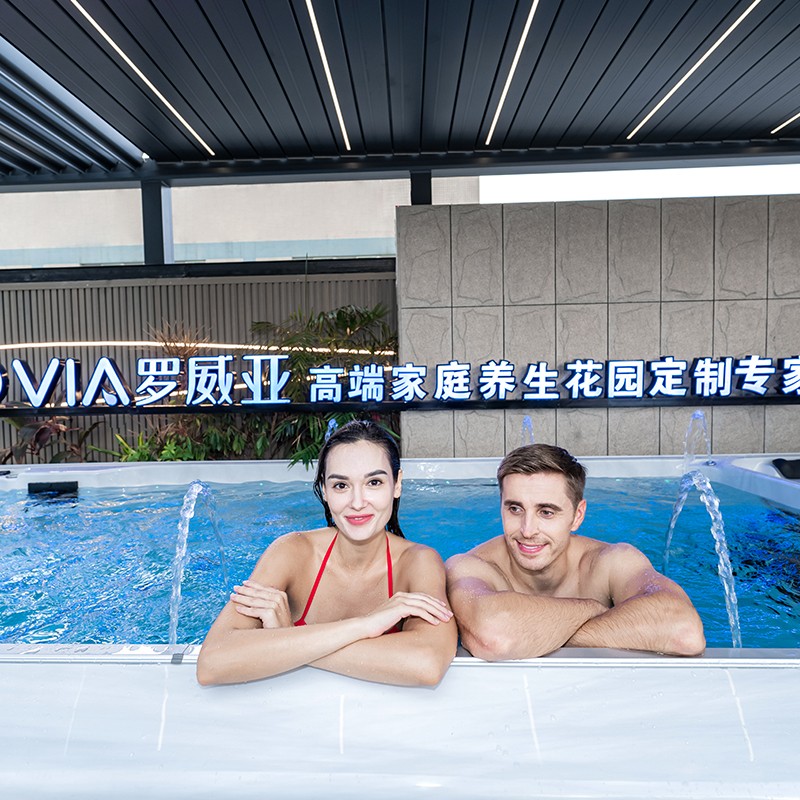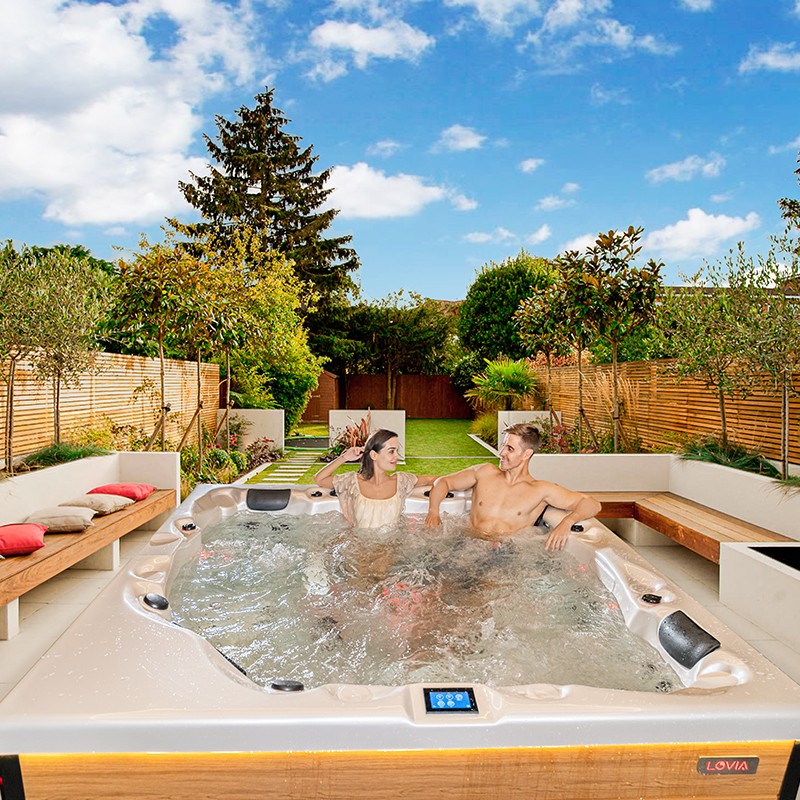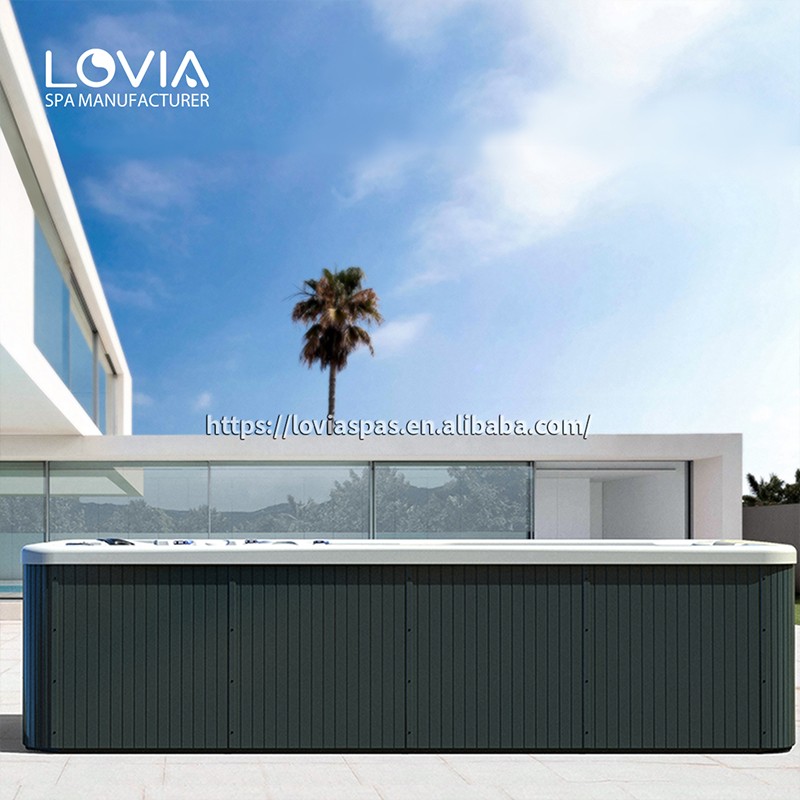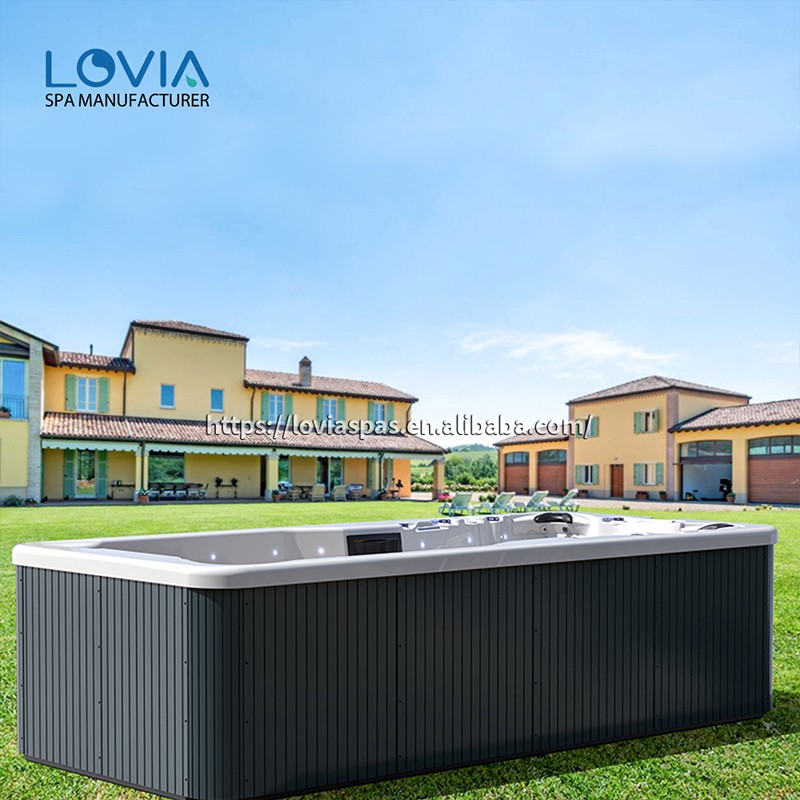
What should never be mixed with chlorine in a swim spa tub?
2025-09-15 15:35Swim spas, combining swimming, relaxation, and therapeutic treatments, are widely used in modern homes and wellness facilities. To maintain water hygiene and control microbial growth, chlorine is one of the most commonly used disinfectants. However, chlorine's chemical properties make it both highly effective and potentially dangerous, especially when mixed incorrectly, potentially causing violent reactions, the release of toxic gases, and even equipment damage.
Many users, motivated by efficiency or misunderstanding, may mix chlorine with other substances to maintain swim spa water quality, unaware that some substances have highly dangerous compatibility issues with chlorine. Therefore, clarifying which substances should never be mixed with chlorine is essential to safeguard user health, equipment safety, and water quality stability.
This article will examine the chemical nature of chlorine, systematically identifying the substances that should not be mixed with chlorine in swim spa tubs and the reasons why. It will also provide scientific and professional advice to help users properly use chlorine products and avoid common but dangerous mistakes.

What are the common forms of chlorine in swim spa tubs?
In swim spas, chlorine is primarily used in the following forms:
Chlorine Type | Chemical forms | Features |
| Free Chlorine | HOCl, OCl⁻ | Effective bactericidal ingredient |
| Trichloroisocyanuric Acid | C₃Cl₃N₃O₃ | Highly stable, high chlorine content, commonly used in tablets |
| Sodium Dichloroisocyanurate | C₃Cl₂N₃NaO₃ | Quickly dissolves, suitable for rapidly increasing chlorine content |
| Liquid Chlorine (Sodium Hypochlorite) | NaClO | Strong oxidant, high pH |
| Agitator (Unstable Chlorine) | Ca(ClO)₂ | Instant bactericidal, strong oxidizing power |
The above chlorine-based substances hydrolyze in water to produce hypochlorous acid (HOCl), achieving disinfection. However, these products are highly oxidizing or reactive, making them highly hazardous when mixed.
What substances should not be mixed with chlorine in swim spas?
The following are chemical categories that should never be mixed with chlorine during use. Direct or indirect contact, whether in or out of water, can cause problems.
1. Acidic chemicals (such as dry acid and hydrochloric acid)
Chemical reaction:
· When chlorine (especially hypochlorite) mixes with an acidic substance, chlorine gas (Cl₂) is generated: NaClO + 2HCl → Cl₂↑ + NaCl + H₂ONaClO + 2HCl → Cl₂↑ + NaCl + H₂O.
Consequences:
· The generated chlorine gas is highly toxic and can cause breathing difficulties and mucous membrane burns.
· It can be extremely lethal in confined spaces (such as indoor swim spas). Corrosion of metal fittings and equipment components.
Operational Recommendations:
· Acids for pH adjustment must be used at least two hours apart from chlorine, and performed with the pump circulating.
2. Ammonia-containing compounds (such as ammonia and certain cleaning agents)
Chemical Reaction:
· Chlorine reacts with ammonia to form chloramines (NH₂Cl, NHCl₂, NCl₃): NH₃ + HOCl → NH₂Cl + H₂ONH₃ + HOCl → NH₂Cl + H₂O.
Consequences:
· Chloramines are harmful gases that irritate the eyes and respiratory tract.
· Chloramines in water cause odor and reduce sterilization effectiveness.
· Chloramines are difficult to remove and require high-intensity agitation.
Operational Recommendations:
· Do not use any cleaning agents (containing ammonia) in swim spa tubs.
· Ammonia-containing cleaning agents should never be used when regularly cleaning swim spa tub filters.
3. Other oxidizing or reducing agents (such as hydrogen peroxide and chlorine dioxide)
Chemical Reaction:
· Strong oxidizing agents react violently with chlorine, potentially causing an uncontrolled exothermic reaction.
Consequences:
· Generates heat, potentially causing fire or explosion.
· Reaction products are unknown, disrupting the water balance.
Operational Recommendations:
· Use only one primary system (such as chlorine or bromine) for your swim spa disinfectant. Do not mix different systems or alternate them.

4. Grease (skin care product, lotion, hairspray residue)
Chemical Reaction:
· Chlorine oxidizes organic lipids, forming chlorinated organic compounds (THMs) such as chloroform.
Consequences:
· Potential risk of carcinogens.
· Causes water to become cloudy, odorous, and foamy.
· Reduces chlorine efficiency and wastes resources.
Operational Recommendations:
· Shower and rinse thoroughly before swimming, especially removing any skin care products.
· Establish a pre-water cleansing system.
5. Dirt and High Concentrations of Organic Matter (Urine, Sweat, and Makeup Residue)
Chemical Reaction:
· Chlorine reacts with amino-based organic matter to form chloramines and trihalomethanes (THMs).
Consequences:
· Irritation to the eyes and nose, causing odor pollution.
· Loss of water luster and clarity.
· Increased frequency of chemical use and maintenance costs.
Operational Recommendations:
· Users should shower thoroughly before entering the swim spa tub.
· Check free chlorine and chloramine levels daily during frequent use.
6. Metal Ions (such as Iron, Copper, and Manganese)
Chemical Reaction:
· Chlorine's oxidizing action oxidizes iron and copper into metal oxide precipitates: Fe₂++ClO− → Fe₃++Cl− Fe₂+ + ClO⁻ → Fe₃+ + Cl⁻ .
Consequences:
· Rust and metallic deposits.
· Damage to the tub and nozzle system.
· Impact on water clarity.
Operational Recommendations:
· Use a metal neutralizer after the initial water filling or topping up.
· Do not use water directly from sources containing heavy metals.
7. Fragrance or Coloring Additives
Chemical Reactions:
· Fragrances or colorings may react with chlorine to form unknown byproducts.
Consequences:
· Cause skin allergies and odor irritation.
· Contaminate the tub walls and pipes.
· Difficult to remove through standard filtration.
Operational Recommendations:
· Only use fragrance-free and color-free products marked "for swim spas only."
· All non-approved scented tablets and colored bath salts should be prohibited.

Consequences and Risk Levels of Incorrect Mixing
To help you understand, the following is a risk level assessment of common mixing errors:
Mixing Objects | Risk Level | Hazard Types |
| Chlorine + Acids | Very High | Highly toxic chlorine gas release |
| Chlorine + Ammonia | Very High | Toxic chloramine gas |
| Chlorine + Hydroxides | Medium High | Violent exothermic reaction |
| Chlorine + Grease | Medium | Odor, carcinogenic byproducts |
| Chlorine + Other Disinfectants | Very High | Uncontrolled explosion/reaction |
| Chlorine + Metal Ions | Medium | Pipeline discoloration, equipment corrosion |
Correct Addition Methods and Safety Practices
To prevent accidental mixing, swim spa users should follow the following operational practices:
1. Add only one chemical at a time
· Even if multiple parameters need to be adjusted simultaneously, add them at intervals.
· Wait at least 30–60 minutes after each addition and measure the changes in the indicators.
2. Always use a circulation system when adding chemicals
· Adding chlorine to static water can result in uneven concentrations, which can easily lead to high concentration spots in certain areas.
· Continuous circulation helps distribute the chemical quickly and evenly.
3. Strictly follow dosage instructions
· All chlorine products must be accurately calculated based on the total water volume of the swim spa tub.
· Do not dose based on your gut feeling to avoid over- or under-concentration.
4. Store in separate areas and sealed containers
· Acids and chlorine must be stored separately and should never be mixed in the same sealed cabinet.
· Protect all packaging from damage, moisture, and direct sunlight.

What warranty does Lovia Spa provide for its spa and hot tub products?
At Guangzhou Huantong Industry (Lovia Spa), we offer a comprehensive warranty covering 2–5 years depending on spa components. For example, the structure is guaranteed for 5 years, the shell for 3 years, and pumps, jets, valves, and other accessories for 2 years. This long-term warranty shows our confidence as a high quality spa manufacturer and supplier.
When you buy directly from our factory, you benefit from not only competitive prices and wholesale promotions, but also professional after-sales service.
